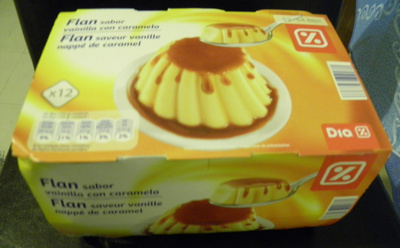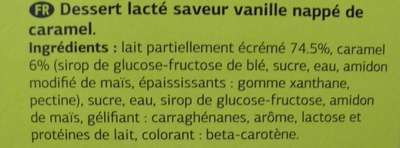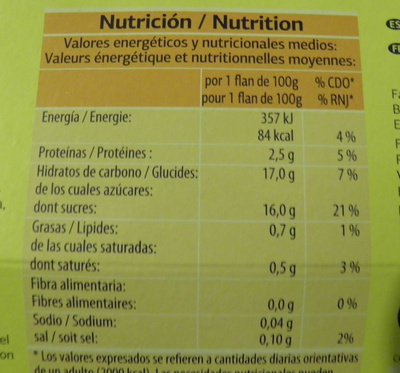Flan saveur vanille nappé de caramel (x 12) - Dia - 1,2 kg (12 x 100 g)
This product page is not complete. You can help to complete it by editing it and adding more data from the photos we have, or by taking more photos using the app for Android or iPhone/iPad. Thank you!
×
Barcode: 8480017348388 (EAN / EAN-13)
Common name: Dessert lacté saveur vanille nappé de caramel
Quantity: 1,2 kg (12 x 100 g)
Packaging: Pot, Cardboard, Fresh, Seal, Sleeve
Brands: Dia
Categories: Dairies, Desserts, Dairy desserts, Fresh foods, Flans, fr:Flans vanille
Labels, certifications, awards: Made in France
Manufacturing or processing places: Lactalis Nestlé Ultra Frais Marques - LNUF Marques (Filiale Groupe Lactalis) - 6 Boulevard Pierre Desgranges - Zone Industrielle - 42160 Andrézieux-Bouthéon, Loire, Rhône-Alpes, Senagral (Filiale Senoble) - 281 Route de Sully - 45260 Lorris, Loiret, Centre-Val de Loire, Senagral (Filiale Senoble) - Avenue des Saulniers - Zone Industrielle - 57170 Château-Salins, Moselle, Lorraine, Senagral (Filiale Senoble) - 30 Rue des Jacquins - 89150 Jouy, Yonne, Bourgogne, France
Traceability code: FR 42.005.001 CE - Andrézieux-Bouthéon (Loire, France), FR 45.187.001 CE - Lorris (Loiret, France), FR 57.132.001 CE - Château-Salins (Moselle, France), FR 89.209.001 CE - Jouy (Yonne, France)
Countries where sold: France
Matching with your preferences
Environment
Packaging
Transportation
Report a problem
Data sources
Product added on by openfoodfacts-contributors
Last edit of product page on by packbot.
Product page also edited by hommedanslalune, jacob80, manu1400, r-one, tacite, teolemon, yann-l.










